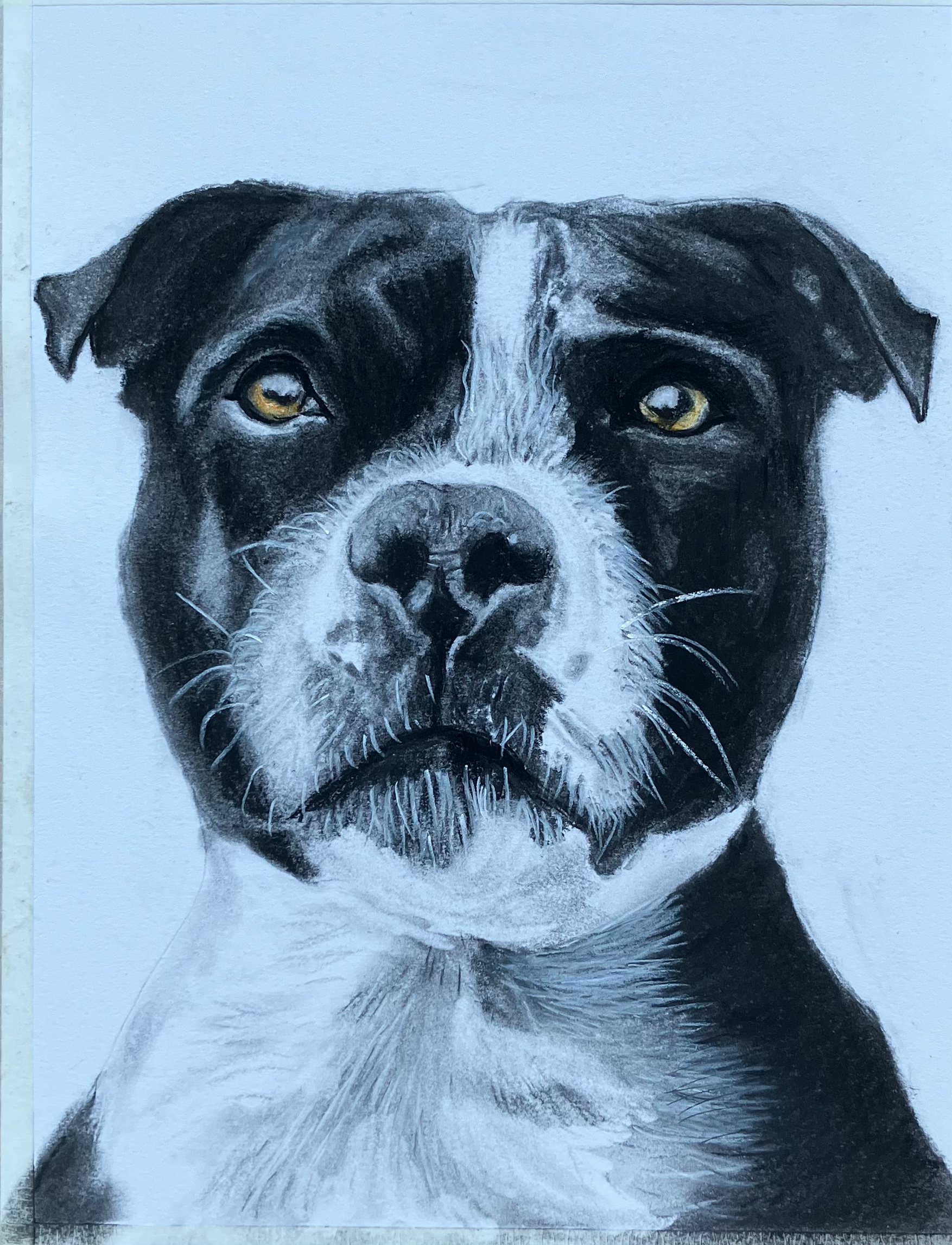Overcoming the "Heinz 57" Dog Portrait hurdles
- Marco

- Mar 22
- 3 min read
I'm currently creating a portrait of Willow, the Norfolk Terrier, based on a photo provided by her pwner. Willow is, I believe, a Norfolk Terrier. Photos from owners often lack the detail needed for quality artwork, unless you've tried to paint or sketch an animal you wouldn't know what to paint. Added to the above unfortunately the owner is uncertain whether Willow is a "Heinz 57" or a pure breed. Terrier experts, if you have any insights, please share your wisdom. So how did I overcome the "Heinz 57" Dog Portrait hurdles ?Well that's just what this post is about, I hope you find it useful.
When developing an animal portrait I prefer to have multiple reference photos. In their absence, I rely on Google AI to suggest a breed. In Willow's case, she appears to be a mix between a Norfolk Terrier, a Norwich Terrier, and a Border Terrier. According to the Norfolk Terrier Club of Great Britain's website, she certainly resembles one, but as I mentioned, I'm not Lewis (Podge) Low, who, according to the NTC website, was one of the contributors to the breed's development in the 1900s. For those interested in reading more about the breed the link to the web site is here.

If you've read my blogs before, you'll know that I work in various media, but for animal portraits, I prefer pastels and increasingly use a combination with coloured charcoals. Willow's coat certainly calls for both and more.
Considering the cost, I chose Pastelmat as the base for the work. I hadn't used it for a while but decided it would offer a good foundation to build upon. I first started using Pastelmat after watching Colin Bradley, one of my early mentors, using the early versions combined with Faber Castell Pitt Pastels on YouTube.
You can find Clairefontaine 360gsm at 30x40cm (12" x 15.5") from the SAA, and I selected the light grey mat to provide a contrasting base for Willow's coat.
I use a variety of tools these days and have enclosed a quick shot of the range used in this composition below.

Starting from left to right.
Derwent Tinted Charcoal XL Blocks I use these to give broad coverage and smooth smudging.
Royal Sovereign Colour Shaper this is invaluable in achieving the feathered fur. I have a whole range of these including large square and round nibs.
Kasimir foam pad smoother. Amazon have a large range of these and replacement foam pads. You will use a lot of these.
Conté à Paris Pierre Noire Charcoal pencils are extremely useful for developing eyes and nostrils.
Faber Castell Pitt Pastels whilst expensive these are by far my most favourite pastel pencils. I think I used at least 10 different colours to create this work.
SASP265 Yellow Ochre Soft Pastels are superb again they complement the Derwent Tinted Charcoal and provide excellent coverage and can be smoothed and blended with charcoals and pastels.
The grey rolled paper smoothers come in a whole range of sizes and shapes but I have to be honest I am using these less and less favouring the more modern silicon alternative colour shapers.
Finally the Westcott ceramic knife is my new toy. Its fantastic for scraping fine lines for fur and highlights.

Each artist has their own method for beginning a composition. I always choose to start with the eyes, as they are often considered the gateway to the soul. If I don't get the eyes right, I believe the rest of the work is a waste of time. It's better to make several attempts to capture the character than to spend time on further development without success.
I must confess to using a bit of artistic license here. I have never met Willow, and the provided image was not very helpful, being quite dark and lacking definition, making it challenging to accurately depict her eyes. This is where other reference photos come into play. By considering various other images and previous work on terriers, this is an approximation of Willow's eyes.

Stage 2 represents 4 hours work so far. Time to stop. I find 4 hours is enough for me. In my early artistic endeavours I would try and push on but, lack of patience and a desire to get the work finished, actually detracted from the final work. I'm retired after all, what's the rush? Another 4 hours tomorrow will see me start fresh and ready to take on the bulk of the fur. A review of Stage 2 with a fresh pair of eyes brings fresh ideas snd modifications that benefit from the rest period.
Day 3
I have to be honest Day 3 was difficult. The supplied photo gave me little to work on as far as Willow's body was concerned. So I decided to play it safe and fade away the lower part of the portrait.


Contact me here



Comments